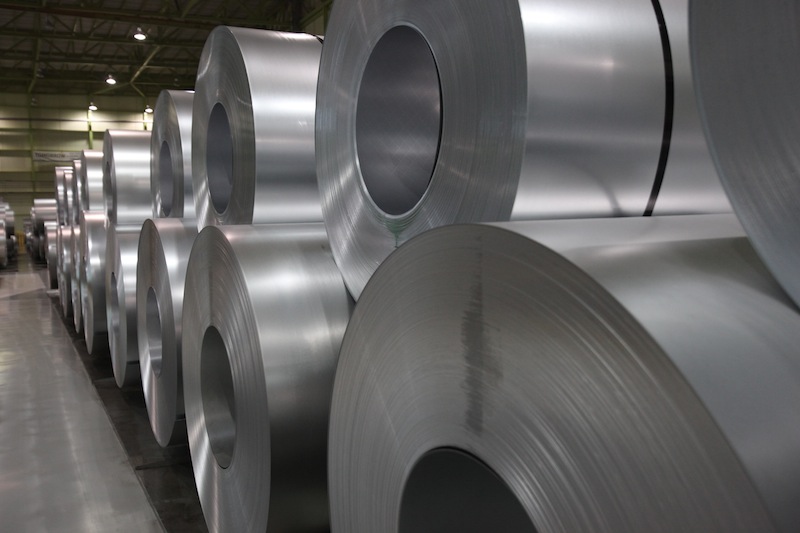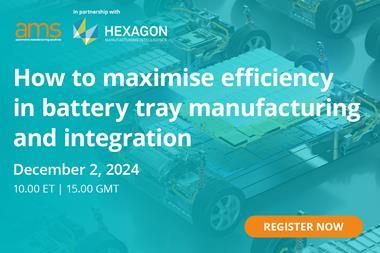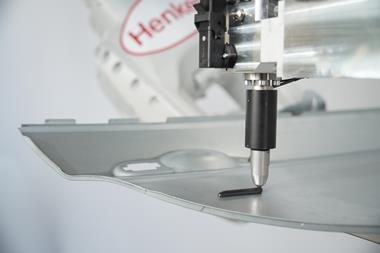The ArcelorMittal finishing plant at Calvert, Alabama, is claimed to be one of the most advanced in the world – supplying the automotive industry in North America with the latest high-strength steels
ArcelorMittal's Calvert plant is relatively new, built in 2009 and originally owned by ThyssenKrupp. ArcelorMittal and joint venture partner Nippon Steel acquired the facility with the aim of producing finished rolled steel to feed demand from carmakers in the US and Mexico. Calvert also provides the energy sector with high-grade steel for tube and pipe applications.
Calvert does not produce steel from the raw material; the initial steel-making process is undertaken by the company’s foundries further north. Instead, the steel slabs are shipped to the facility via the port at Mobile and then on barges up the Tom Bigby River, a journey which takes around eight hours. Once off-loaded using electromagnetic cranes, the slabs are stored in a yard next to the first of three interconnected mills – ready for the finishing process.
The site covers a total of 2,600 acres, with the mills and yards occupying 1,500 acres. Interestingly for an industrial facility, the buildings are coloured to help them blend into their forested surroundings – but also tagged with colours to indicate their function (for example, orange for hot processes and blue for cold processes). The production line runs approximately two miles in length, so to ease the transfer between finishing operations and ensure the continuity of the process, the mills are linked by an underground rail system.
The process of finishing the steel requires huge amounts of water, sourced from the nearby river. To minimise the plant’s environmental impact, the facility has its own wastewater treatment plant which collects and cleans 17m gallons of wastewater per day. This clean, pollution-free water is then returned to the river.
Blowing hot & cold
The hot strip mill (HSM) is the first stage of the finishing process. This is a vast space equipped with heating systems for the three ‘walking beam’ furnaces that feature ultra-low NOx burners and sequential firing technology. Each of the furnaces can re-heat 450 metric tons of steel per hour. The slabs are fed into these furnaces and heated to 1,500°C. The red-hot, glowing slabs are then de-scaled with water jets. Afterwards, they are conveyed into a set of rollers which squeeze the slabs to pre-determined size; this roughing process is the start of the cycle of rolling to reduce the thickness of the slab and produce the desired sheet steel. The reduction process takes the slab thickness down in stages from 225mm to 30mm.

As the slabs proceed through the HSM, they are cooled in the laminar cooling section at a carefully controlled rate. This produces the required grade of finished steel depending on the application. Throughout the hot-rolling process, the steel is carefully monitored from a control room above the line, using both visual and electronic systems.
Moving through to the cold-rolling mill, the steel is ‘pickled’ in hydrochloric acid to remove any remaining scale. This process adjusts the width of the roll and creates the required finish. The rollers used in this section are again refinished in-house to maintain the surface quality of the sheet steel.
The final process at Calvert is the hot-dip galvanising line. Here the steel is given anti-corrosion coatings in another large-scale operation. The coils of steel are welded together to produce continuous ribbons which are then fed into one of four treatment lines. This line offers three treatments: galvanised, galvalume and aluminised. Maintaining the flatness of the steel sheet is very important for the consistency of the surface finish, and keeping an even tension on the continuous lengths of steel requires a vertical solution. Huge storage towers thread the ribbons of steel into the dip tanks, balancing the delivery of the material with the speed of the coating process and avoiding a backlog in subsequent operations. As the steel emerges from the dip tanks, air-knives correct the coating thickness.
As might be expected, a key part of the process is ensuring that the performance requirements of the steel and coatings are met. Calvert features its own quality control lab where up to 4,000 specimens are tested per week. The tests include detailed inspection of the micro-structures of the steel and a series of destructive tests.
Rising to the lightweighting challenge
ArcelorMittal has recently been working on a project to develop lightweight solutions for pick-up trucks. This is a hugely popular vehicle segment in the US and manufacturers are under pressure to reduce fuel consumption. Ford’s announcement that it would be taking the bold step of producing the body of its bestselling F-150 in aluminium has undoubtedly focused the attention of the other OEMs on the challenge of lightweighting.
ArcelorMittal has some expertise in developing lightweight, high-strength steel structures, such as the door-ring for Honda’s Acura models. This uses HSS in a tailor-welded blank to form a very strong structure at greatly reduced weight.
The company has also been developing solutions for the makers of pick-up trucks through its S-in motion project. This has involved taking the structure of an existing production pick-up and applying the latest generation of HSS. The company says this has resulted in a vehicle that is lighter, stronger, cost-effective and feasible to manufacture. ArcelorMittal will not say which OEMs it has been working with; however, GM has been drawing attention to the weight savings on its 2014 Silverado model.
New materials are certainly gaining ground in automotive manufacturing, but it is clear that steel is a material which continues to be developed and improved in order to meet increased performance requirements.
 AMS: What is the biggest technical challenge for ArcelorMittal in supplying the automotive sector?
AMS: What is the biggest technical challenge for ArcelorMittal in supplying the automotive sector?
Blake Zuidema (BZ): It’s not really a cost issue, as our high-strength steel (HSS) solutions are more competitive on a cost-per-kilo compared to other materials. When we offer our products to the market they are fully vetted and tested in our production process. Part of the challenge comes with integrating the HSS into the OEM’s production process (forming, welding, joining, etc).
We have developed our own solutions to these challenges and work with the OEM to help them produce viable parts; it's a learning process between ArcelorMittal and our customers. These are new materials and do, in some cases, require slightly different manufacturing techniques.
The other big challenge is in the evolution in the design of the vehicles. There are times when it is necessary for the OEM to carry over a lot the structure of a vehicle. In those cases, the opportunity to change the structural design – the shape of the structures, how and where loads are placed, etc – to take full advantage of the weight-saving opportunities is not there.
If you can change the shape of a structure, the positioning of connections, how the loads are carried from the front to the rear of the vehicle, you can significantly improve the weight of the vehicle by taking full advantage of the properties of HSS. If there is a lot of carry-over, you don’t have the flexibility to do that and you are forced to use an older structure which isn’t as efficient.
AMS: So the OEMs' drive to reduce weight can be constrained by using an older structure?
BZ: Yes, in some cases.
AMS: With most vehicle-makers pursuing global platform architectures, will this have an impact on design flexibility and the adoption of new lightweight steels?
BZ: I believe that the world’s OEMs are continuing to design and build the most efficient vehicles possible and take full advantage of the latest steels.


































